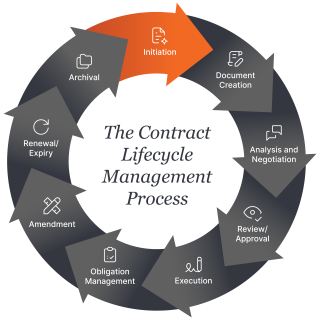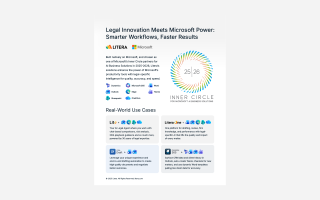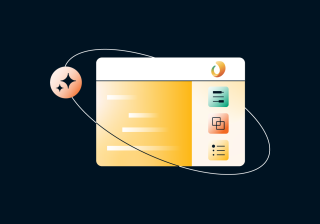What is Contract Lifecycle Management? Key Concepts and Best Practices
Contract lifecycle management (CLM) is the systematic management of a contract from its initiation through execution, performance, and renewal or expiry. It streamlines the entire contract process to ensure compliance, reduce risks, and maximize operational and financial performance. In addition, CLM covers end-to-end management to guarantee every contract is clear, enforceable, and aligned with organizational objectives.
Many legal, procurement, and other departments within businesses, healthcare providers, and other institutions are prioritizing CLM due to the increasing volume and complexity of contracts, the need for stricter regulatory compliance, and the rising demand for efficiency and client satisfaction. The push toward digital transformation has underscored the inefficiencies of traditional contract management methods, making CLM solutions more urgent as organizations seek to optimize costs and enhance operational performance.
CLM benefits their bottom line and operational efficiencies by reducing costs through automation, protecting revenue by ensuring contractual obligations are met, and improving client relationships by providing faster and more accurate insights. Legal departments are leveraging technology in CLM through automation and AI, which streamline contract drafting, review, and approval processes. Centralized contract repositories allow for improved accessibility and consistency, and analytics and reporting tools to track key performance indicators and make data-driven decisions.
The Contract Lifecycle Management Process
The CLM process typically includes the following steps:
- Initiation: Identifying the need for a contract and gathering relevant information.
- Document Creation: Crafting initial drafts using approved templates and incorporating the latest and most relevant language.
- Analysis and Negotiation: Understanding, discussing, and negotiating terms with the other party.
- Review/Approval: Obtaining necessary approvals from stakeholders, ensuring thorough examination of terms.
- Execution: Signing the contract and making it legally binding.
- Obligation Management: Ensuring both parties meet their contractual obligations.
- Amendment: Making any necessary changes to the contract.
- Renewal/Expiry: Reviewing the contract for renewal or managing its expiration.
- Archival: Storing the contract securely for future reference.
Six Best Practices in Contract Lifecycle Management
Implementing best practices in CLM is essential for ensuring efficiency, compliance, and risk mitigation within an organization. By following these key practices, companies can streamline their contract processes, enhance productivity, and minimize legal and financial risks.
- Centralized Repository: Maintaining a single, centralized repository for all of an organization’s contracts is fundamental to effective CLM.
- Standardization: Using standardized templates and clauses is a crucial step in reducing drafting time and ensuring consistency across all contracts.
- Automated Workflows: Automating drafting, review, and approval workflows is a powerful way to expedite the contract management process and reduce manual errors.
- Compliance Monitoring: Regularly monitoring compliance with contractual obligations is vital to avoiding penalties and maintaining good relationships.
- Performance Tracking: Tracking contract performance against key performance indicators (KPIs) is essential for identifying areas for improvement and ensuring that contracts deliver the expected value.
- Regular Audits: Conducting regular audits of contracts is a best practice that helps ensure compliance with contract terms and identify any discrepancies or deviations.
Benefits of Contract Lifecycle Management
Implementing a robust CLM system offers several benefits.
- Increased efficiency by streamlining processes and reducing the time spent on contract creation and management.
- Improved compliance ensures adherence to legal and regulatory requirements, while risk mitigation identifies and addresses potential risks early in the contract lifecycle.
- Cost savings result from automation and improved negotiation.
- Enhanced visibility provides better insight into contract statuses and performance, and better relationships are facilitated with clients, partners, and vendors through clear communication and compliance.
How Litera Can Help with Contract Lifecycle Management
Litera provides industry leading tools that streamline document drafting and contract review and analysis, helping law firms engage with some of the best contract lifecycle management software in the market, ensuring time savings, risk mitigation, and high-quality work product.
Tools that enhance productivity:
- Litera Draft: A comprehensive suite of tools for document drafting and management that follows the drafting lifecycle and resides in Microsoft Word and Outlook, improving efficiency and reducing the risk of errors.
- Kira: An AI-powered contract review and analysis tool that enhances accuracy and efficiency, providing deeper insights into contract clauses and data points.
- Transact: A tool for dynamic checklists and smart signing administration, including approvals, improving transaction management, and fostering organizational transparency.
Tools for data governance:
- CAM: A SaaS platform designed to manage and govern collaboration systems, providing a single source of truth and enhancing client data security.
- FileTrail: A leader in providing information governance and records management solutions, designed to help organizations manage their physical and digital information lifecycle.





